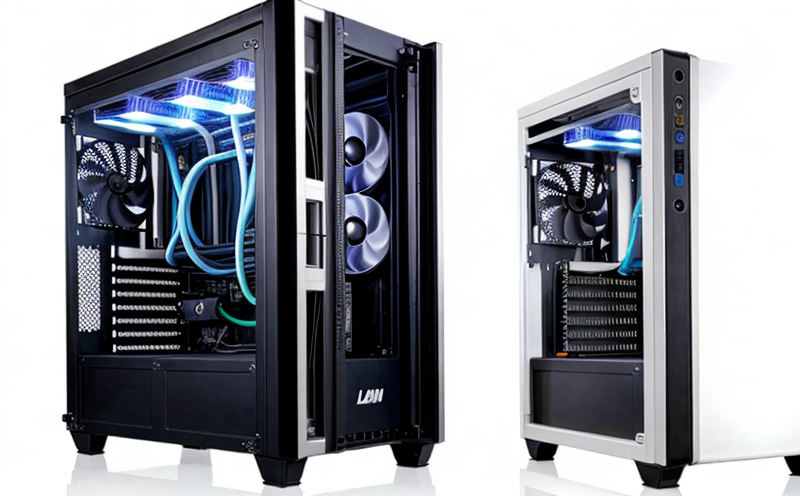ASTM E1951 Chiller Capacity Verification
The ASTM E1951 standard provides a method to verify the capacity of chillers, ensuring they meet their design specifications. This service is crucial for quality assurance and compliance in HVAC equipment manufacturing and installation.
Chillers are vital components in HVAC systems, responsible for cooling water that circulates through air handlers or evaporative coolers. Their performance directly impacts energy efficiency, comfort levels, and overall system reliability. Ensuring chiller capacity meets design specifications is essential to avoid operational inefficiencies, costly repairs, and potential safety hazards.
ASTM E1951 outlines the methodology for determining the cooling capacity of chillers under specified conditions. This includes measuring the flow rate of water through the condenser, monitoring the entering and leaving water temperatures (EWT and LWT), and calculating the chiller's total cooling capacity.
The test is typically conducted in a controlled environment where the chiller can be operated at various load levels to ensure it performs as expected under different conditions. The data collected during these tests is used to verify that the chiller meets or exceeds its rated capacity, ensuring accurate and efficient operation.
During the testing process, several factors are carefully considered, including ambient temperature, water quality, and system configuration. These elements can significantly impact the performance of chillers, making it essential to account for them during verification tests.
The ASTM E1951 methodology is widely accepted in industries that rely heavily on HVAC systems, such as commercial buildings, data centers, and industrial facilities. By adhering to this standard, manufacturers and installers can ensure their chillers meet the highest quality standards, thereby enhancing overall system performance.
The testing process involves multiple steps, starting with a thorough inspection of the chiller unit to ensure all components are in good working condition. Next, water is circulated through the condenser at specified flow rates and temperatures. The entering and leaving water temperatures are then monitored and recorded to calculate the cooling capacity.
Once the initial data is collected, further adjustments may be necessary to account for any discrepancies between actual performance and design specifications. This could involve recalibrating certain parameters or making minor modifications to the system configuration.
The final step in the testing process involves documenting all findings and preparing a comprehensive report detailing the results of the capacity verification. This report serves as proof that the chiller meets its designed cooling capacity, ensuring compliance with industry standards and regulations.
Why It Matters
Ensuring that chillers meet their specified capacities is crucial for several reasons:
- Economic Benefits: Proper capacity verification can lead to significant cost savings by optimizing energy consumption and reducing unnecessary maintenance.
- Operational Efficiency: Chillers that perform as expected contribute to more efficient HVAC systems, improving overall building performance.
- Safety: Ensuring chillers operate within their design parameters helps prevent potential safety hazards and extends the lifespan of the equipment.
Incorporating ASTM E1951 into your quality assurance process can help you maintain a competitive edge by delivering high-quality HVAC systems that meet or exceed industry standards. This service is particularly valuable for companies involved in the design, manufacturing, and installation of HVAC equipment, as it ensures compliance with international standards.
Applied Standards
The ASTM E1951 standard is widely recognized and used to verify chiller capacity. This standard provides a comprehensive methodology for testing chillers under specified conditions, ensuring accurate and reliable results. Some key aspects of this standard include:
- Testing Conditions: The standard specifies the exact conditions under which tests should be conducted, including water flow rates, temperatures, and other environmental factors.
- Data Collection: Detailed protocols for measuring various parameters during testing are outlined in ASTM E1951, ensuring consistent and accurate data collection.
- Reporting Requirements: The standard also provides guidelines on how to report test results, making it easier to document findings and ensure compliance.
By adhering to ASTM E1951, you can demonstrate your commitment to quality assurance and compliance with industry standards. This is particularly important for companies involved in the HVAC equipment sector, as it helps build trust with clients and ensures long-term success.
Industry Applications
- Data Centers: Chillers are critical components in maintaining optimal temperatures for high-performance computing systems. Ensuring their capacity is verified can prevent overheating and system failures.
- Commercial Buildings: In large office complexes, hotels, and retail spaces, chillers play a vital role in providing comfortable indoor environments. Proper verification ensures energy efficiency and occupant satisfaction.
- Industrial Facilities: Manufacturing plants and warehouses often rely on chillers for process cooling. Capacity verification helps maintain consistent production conditions and prevents downtime due to equipment failure.





